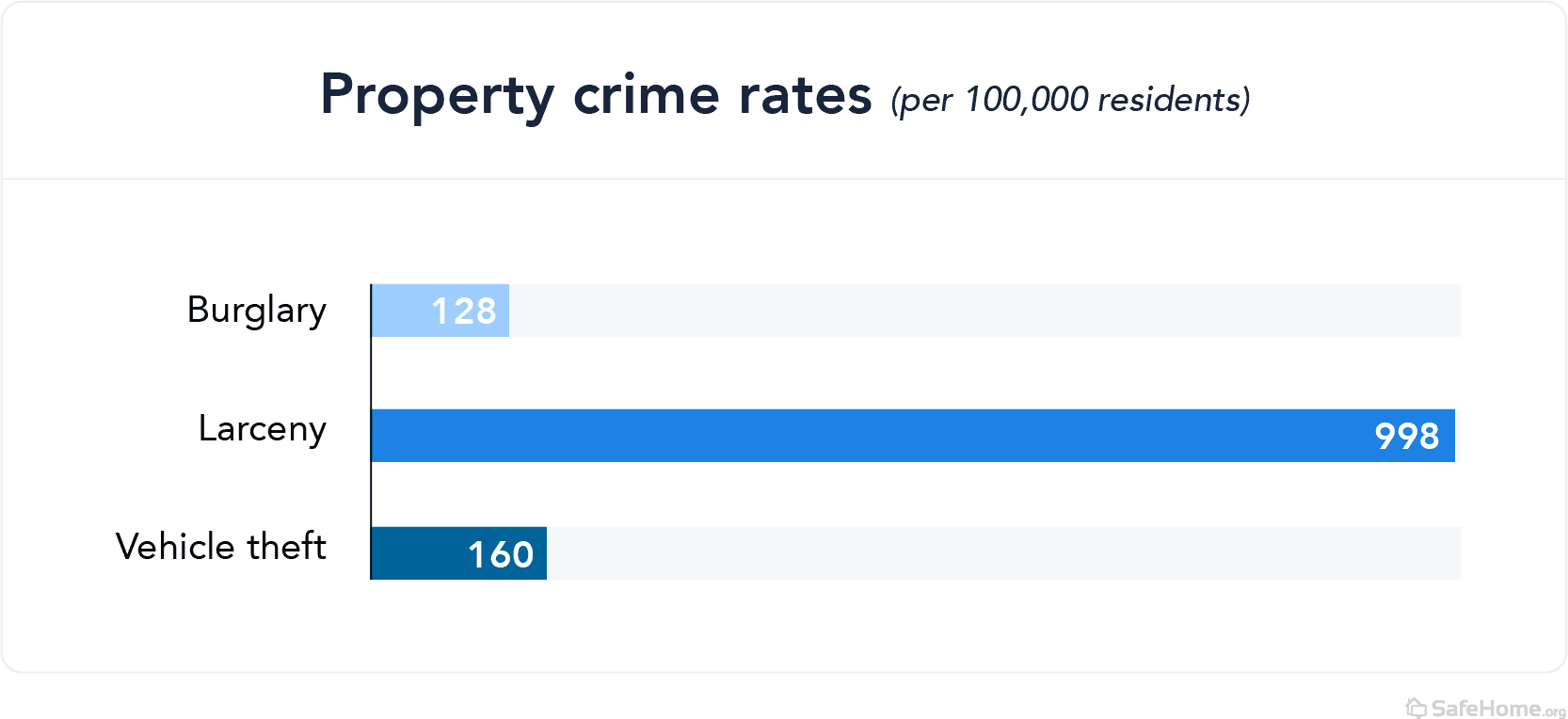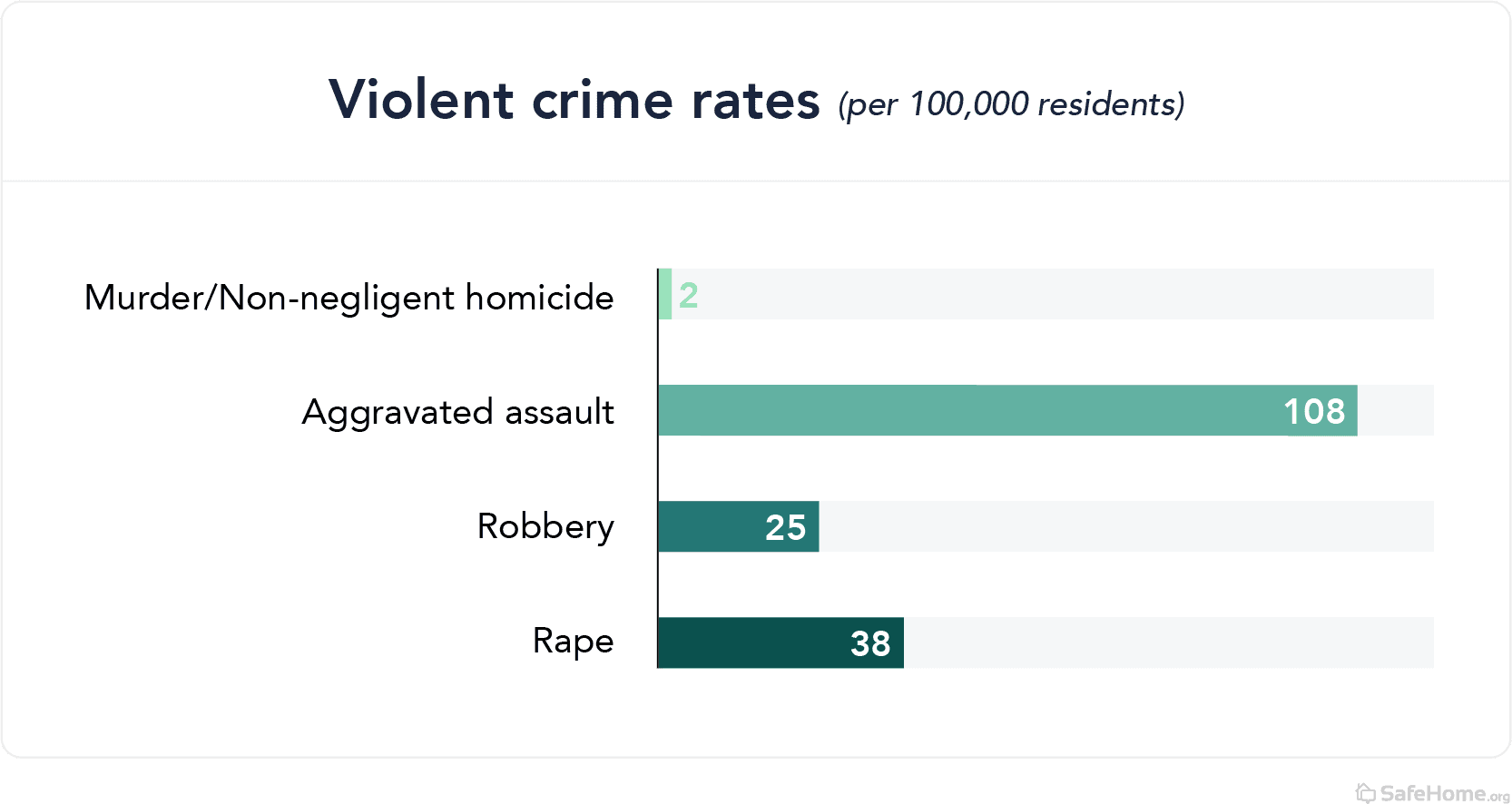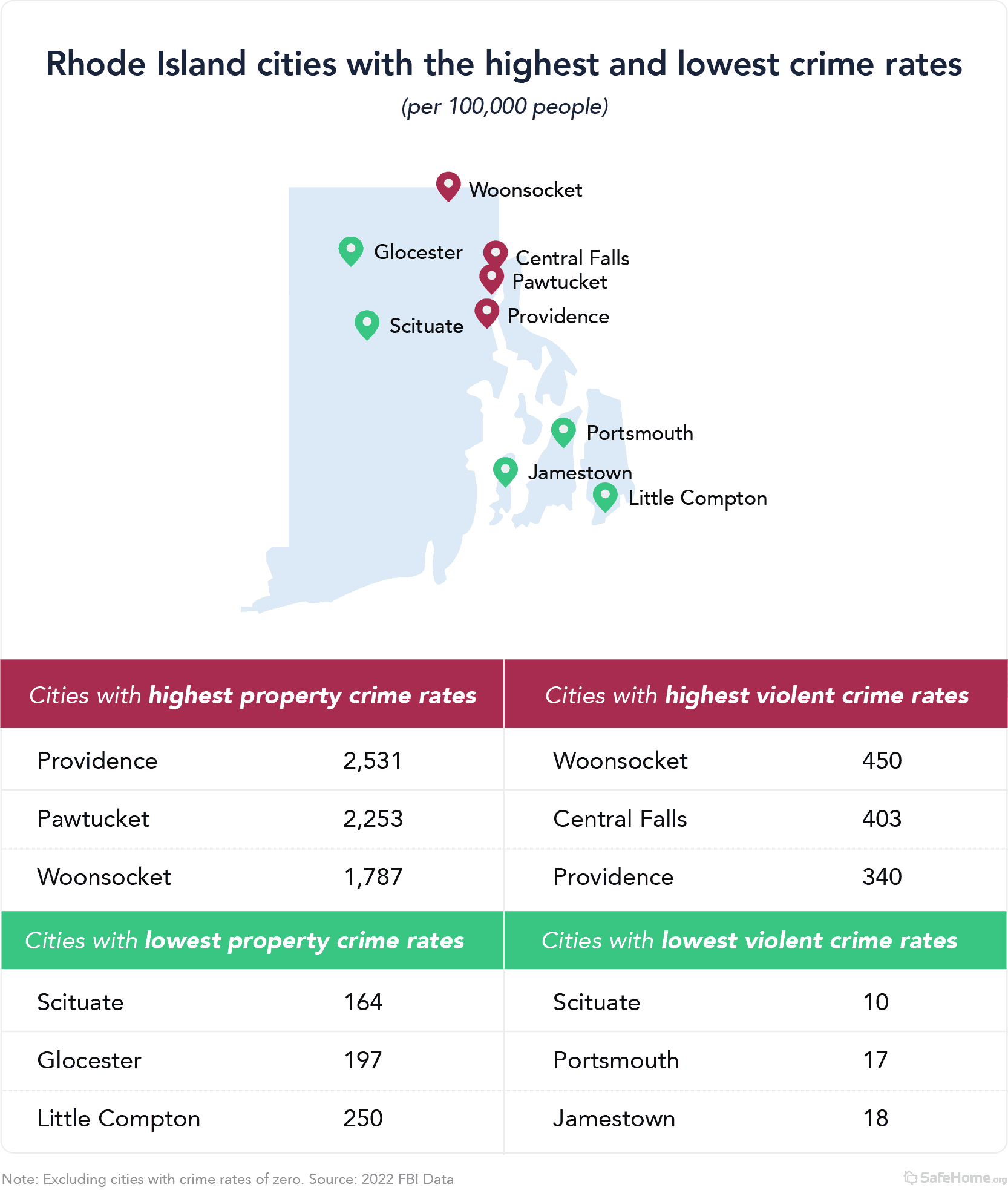The Safest and Most Dangerous Cities in Rhode Island

Earlier this year, Rhode Island was rated the worst state for starting a new business. The Ocean State — home of Providence, Brown University and Narragansett Bay — was also ranked as the fourth-worst state to retire in, according to the Newport Buzz.
Despite Rhode Island’s poor performance in those categories, it is one of the safest states.
Rhode Island has the 47th-highest (or fourth-lowest) rate for violent crime, at 172 incidents per 100,000 residents. This is 55% lower than the national average.
At 1,285 incidents per 100,000 people, Rhode Island's property crime rate is the 45th highest in the country and is 34% lower than the national average.
Statewide Crime Trends in Rhode Island
Rhode Island is famous for being the smallest U.S. state. Founded in 1636, it was one of the original 13 colonies. Its charming coastal towns tend to be peaceful.
Property Crime in Rhode Island
Rhode Island ranks 45th in the country for property crime, with a burglary rate of 128 incidents per 100,000 residents, a motor vehicle theft rate of 160 incidents per 100,000 residents and a larceny-theft rate of 998 incidents per 100,000 residents.

The safest cities in Rhode Island for property crime are Scituate (164 incidents per 100,000 people), Glocester (197) and Little Compton (250). The worst city for property crime in Rhode Island is Providence, with 2,531 incidents per 100,000 people in the most recent year of available crime data.
Violent Crime in Rhode Island
Rhode Island has the fourth-lowest violent crime rate in the country: 172 incidents per 100,000 people. As in New Hampshire and Maine, its relative socioeconomic homogeneity contributes to lower crime rates, according to social science research.

The safest city in Rhode Island for violent crime is Scituate. The least-safe Rhode Island city for violent crime is Woonsocket (with a rate of 450 per 100,000), followed by Central Falls and Providence (403 and 340 per 100,000, respectively).
Our Data
Our data comes from comprehensive reporting compiled by the FBI and accessed via the Crime Data Explorer (CDE) website. Property and violent crime state figures were drawn from Table 5 of the 2022 Crime in the U.S. Report. Metropolitan figures were found in Table 6, Crime in the U.S. by Metropolitan Statistical Area. City-level figures were drawn from Table 8, Offenses Known to Law Enforcement by State by City. The population figures in that table are U.S. Census Bureau provisional estimates as of July 1, 2020.
Limitations: According to the FBI, the data in the publication tables may differ from those released on the Explorer Pages of the CDE. These variations are due to the difference in methodologies between the publication tables and data displayed on the CDE. Please note that crime statistics are not the sole measure of a city’s safety.
Navigate Crime Data by State
- Alabama
- Alaska
- Arizona
- Arkansas
- California
- Colorado
- Connecticut
- Delaware
- Florida
- Georgia
- Hawaii
- Idaho
- Illinois
- Indiana
- Iowa
- Kansas
- Kentucky
- Louisiana
- Maine
- Maryland
- Massachusetts
- Michigan
- Minnesota
- Mississippi
- Missouri
- Montana
- Nebraska
- Nevada
- New Hampshire
- New Jersey
- New Mexico
- New York
- North Carolina
- North Dakota
- Ohio
- Oklahoma
- Oregon
- Pennsylvania
- South Carolina
- South Dakota
- Tennessee
- Texas
- Utah
- Vermont
- Virginia
- Washington
- West Virginia
- Wisconsin
- Wyoming

